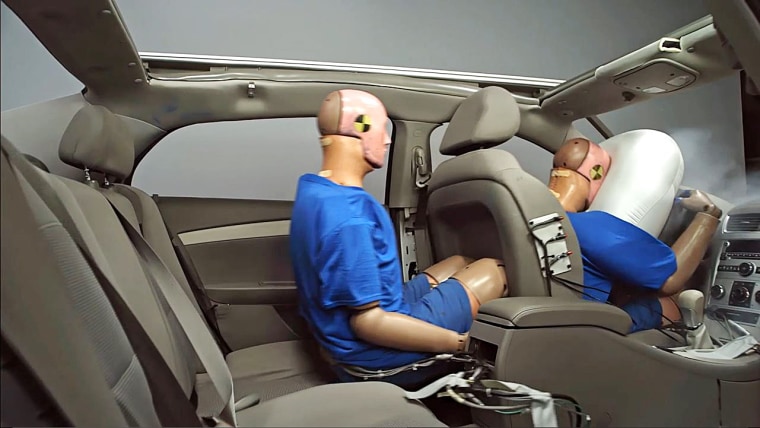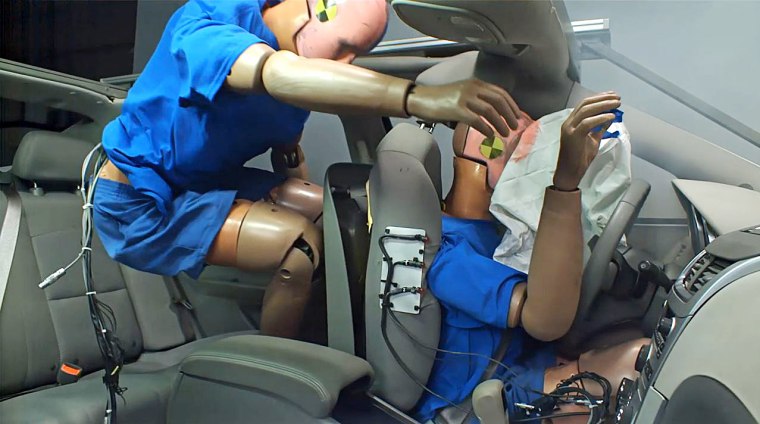Adults are less likely to buckle up when they're sitting in the back seat, especially when they're in a taxi or other ride-hailing service, a new survey finds.
While most people reach for their seat belt when they get behind the wheel, many mistakenly perceive the back seat to be safer, according to survey findings from the non-profit Insurance Institute for Highway Safety.
"People may view the back seat as providing some sort of cocoon of safety, when in fact it doesn't if you're not belted," said Russ Rader, spokesman for the Insurance Institute for Highway Safety. "The laws of physics are not suspended because you're in the back seat. If you're not belted, you could become a projectile in a crash, not only putting yourself at risk, but potentially injuring others in the vehicle."
Among adults who admit to not using their seat belts in the rear of a car, four out of five said they didn't click for short trips or when traveling by taxi, Uber, or Lyft.
And for those for whom most of their trips as a rear-seat passenger were in such hired vehicles, only 57 percent of passengers reported always using their seat belt — compared to 74 percent of passengers in personal vehicles.
"It's disappointing," Rader said. "You often see people lost in their smart phones, not buckled up, and it clearly is a problem as ride-hailing services become more popular. We need to find a way to get more people buckled in the back seat."
While many assume a crash in a quick taxi ride around town won't be as serious as a highway crash, the Insurance Institute's crash tests revealed that even at 35 mph, a collision "can be devastating if you're not belted" in the back, Rader said.
"The laws of physics are not suspended because you're in the back seat."
The study is one of the first to focus on rear-seat passengers' seat belt use after a 2015 nationwide study found 89 percent of drivers and front-seat passengers buckle up, compared to just 75 percent of adult rear-seat occupants.
Women are more likely to always use seat belts in the back, as are adults who attended college, the latest survey found.
Other than mistakenly believing the back seat to be safer than the front, reasons for not using a seat belt ranged from forgetting, to finding seat belts uncomfortable, to not being able to find the belt or buckle.
Rozalind Schlatter, who lives in Portland, Oregon, was on vacation with her family in Idaho 10 years ago when their SUV rolled over. Her 12-year-old son Calvin, the only one not wearing a seat belt, was killed.

"All three of my other children lived. They were buckled," Schlatter told NBC News' Miguel Almaguer. "It is something that can happen to anyone at anytime."
The IIHS suggested vehicles come equipped with audible reminders to buckle up in the back, something few have. It also recommended stronger seat belt laws: While all states except for New Hampshire require adults in the front to use seat belts, rear-seat passengers are only required to buckle up in 29 states plus Washington, D.C.
Seat belts saved nearly 14,000 lives in 2015, according to estimates by the National Highway Traffic Safety Administration. The IIHS says more than half of people who die in passenger vehicle crashes in the U.S. are unbelted.

